Southern mountain caribou: A fate bound to ancient forests

📢 Take action for southern mountain caribou
CARIBOU: A TREASURE OF THE PAST HAUNTED BY THE PRESENT
I’ve heard that you’d feel them before you’d see them. The ground would quake and a brewing rumble would transfer from the mountains to your feet. In the distance, the first set of antlers would peak over the foothill, then two, then three and in a blink of an eye, a hundred. I’ve learned from Chief Roland Wilson that caribou were there for the people of West Moberly First Nation in times of need. When winters were so cold other food was scarce, caribou were plentiful.
Caribou in B.C. thrive where big ancient trees are found, the same trees logging companies hunt relentlessly
These animals have been traversing this Earth for 1.6 million years. Imagine that — woolly mammoths, giant sloths and Beringian lions all roamed the lands now called Canada, alongside caribou who are still here today. They’ve survived ice ages, tectonic shifts and Beringian lions. But tragically, they might not survive us.
Read the PDF/print version of this publication
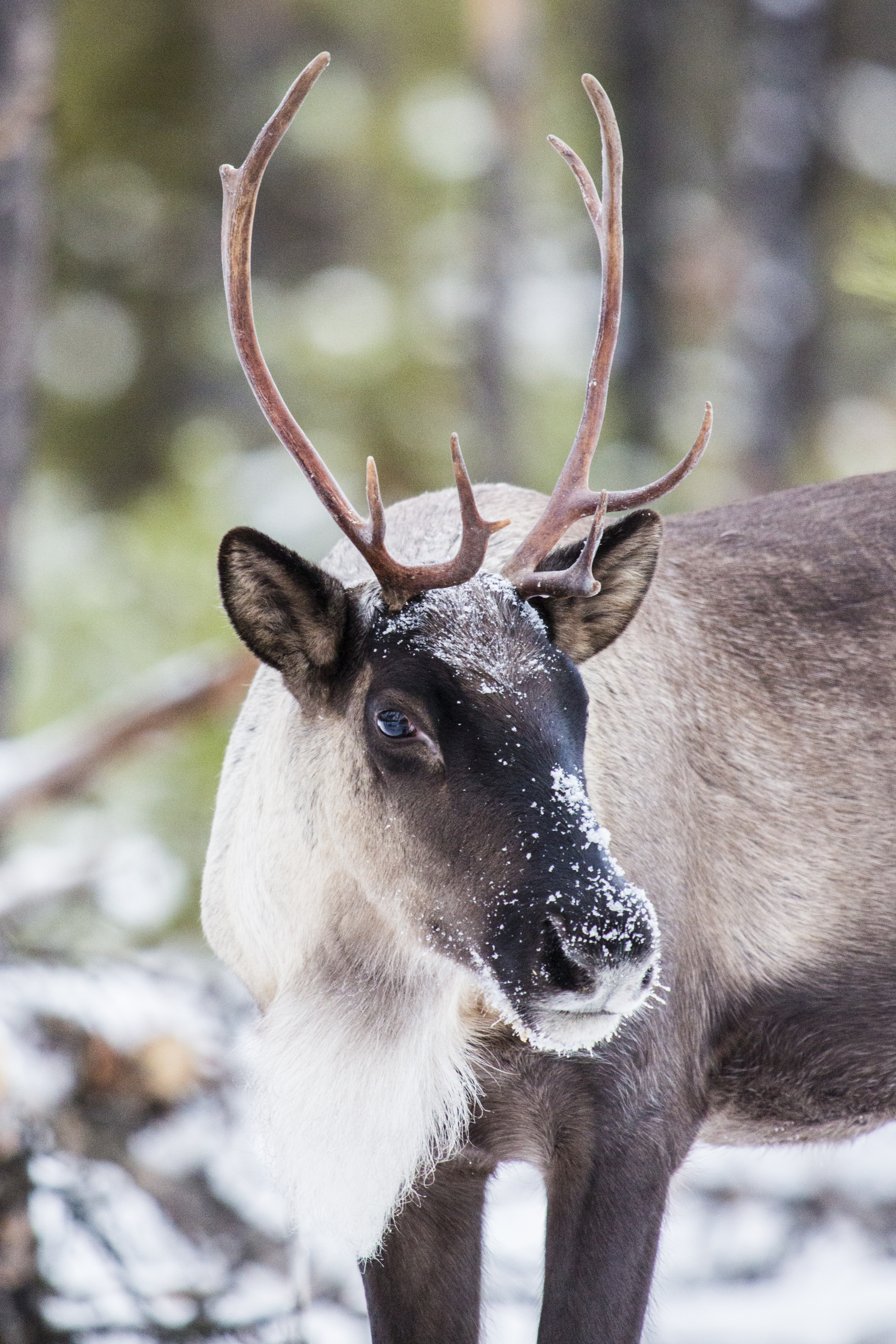
In the flicker of time since Europeans stepped foot on this continent, caribou have been hit hard. Colonization devastated Indigenous Peoples, land and wildlife. By the late 1800s, colonizers were overhunting caribou and destroying their habitat. By the mid-1900s, large-scale industry destroyed forests so severely the predator-prey dynamics of caribou were altered, further pushing caribou toward extinction. Things haven’t gotten better. In the last 20 years, caribou across Canada have declined by an estimated 56 per cent. Yet herds are still clinging to life in every province and territory except New Brunswick, Nova Scotia and PEI. Caribou in B.C. thrive where big ancient trees are found, the same trees logging companies hunt relentlessly.
Caribou are like smoke detectors, sensing the house is on fire before we do. Their dwindling numbers are an alarm bell warning us that forests aren’t healthy. We need to listen. Habitat alteration due to logging, fossil fuel extraction and other forest-destroying industrial activities causes more predators to kill caribou, which is the ultimate cause of caribou decline. The B.C. government refuses to develop legislation to protect species at risk. This has allowed corporations to feel entitled to whichever forests they want, even if it destroys at-risk wildlife habitat. It’s taken immense pushback from the public to force the government to take some efforts to protect caribou, but it’s not enough.
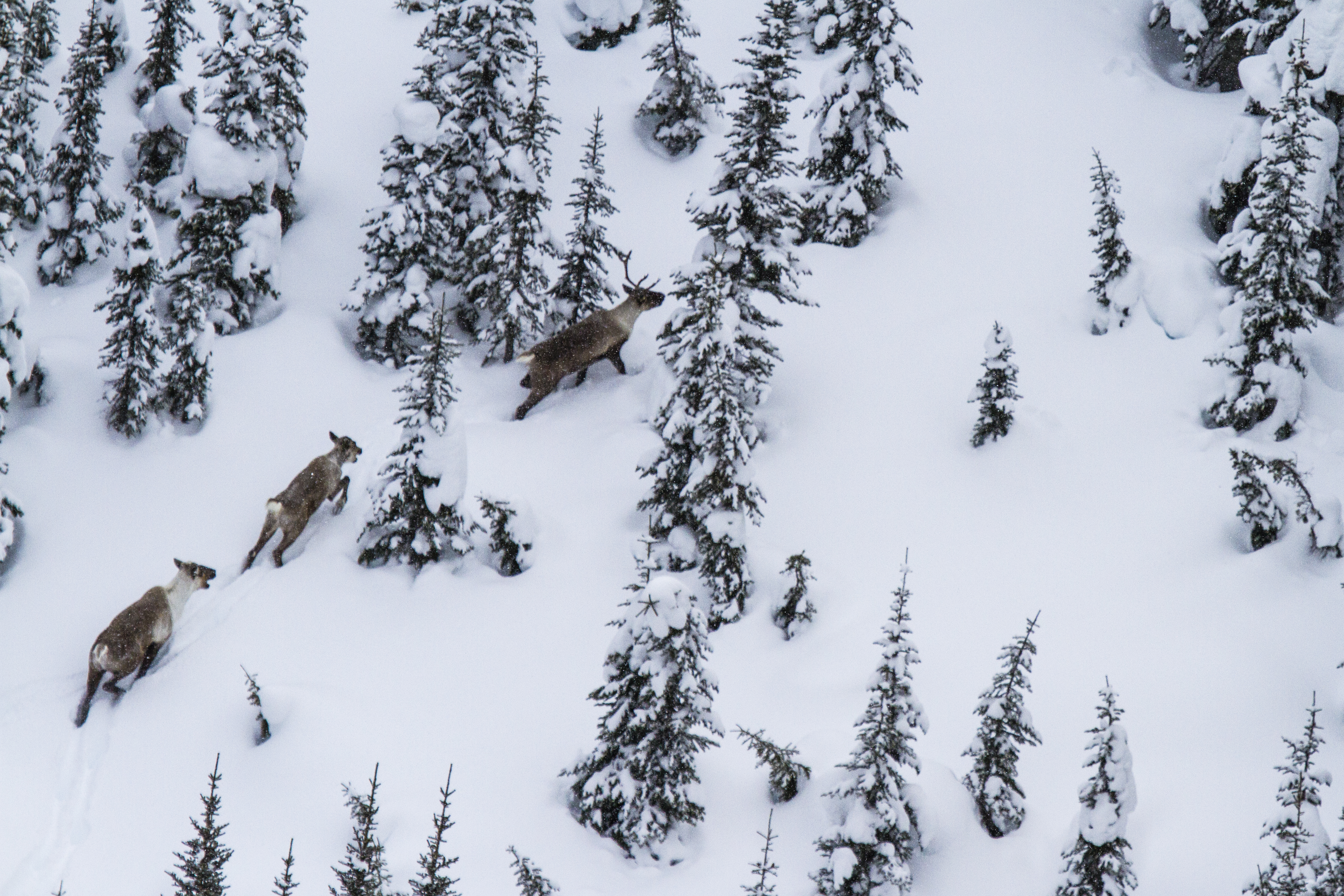
It shouldn’t take perpetual outrage to cancel harmful projects — they shouldn’t be allowed in the first place. Industrial corporations should have to prove they are capable of protecting species before they operate. The BC NDP must listen to First Nations, communities, and the public over corporations owned by a few wealthy individuals.
Without strict regulation, caribou will continue to be a victim of unfettered resource extraction. We need the government to step up for caribou by supporting Indigenous-led conservation, protecting habitat and implementing legislation that prevents species from declining in the first place. Read on to find out more about the incredible history of caribou on these lands, their deliberate demise at the hands of industry and government, and how we must work together, guided by Indigenous knowledge, to save them.
CARIBOU WHO’S WHO
Snowflakes fall in the millions in caribou country on Secwépemc territory, creating snowpack meters deep. With snowshoes and an eye for lichen, you could venture into this ancient snowy world for a chance to spot southern mountain caribou. Possessing hooves wider than they are long, the herds rest above the snow with their off-balance, goofy-looking young. Southern mountain caribou find refuge in high elevation old-growth forests, where the deep snow is like quicksand to predators.
Southern mountain caribou are a population of woodland caribou, residing mostly in B.C. Herds are scattered throughout the interior, from Smithers to Chetwynd in the east and south to Nakusp. Herds extend into the Alberta Rocky Mountains from Grande Cache to Jasper. At one point they lived in Banff, but that herd became extinct in 2009. They no longer exist in that area. The South Selkirk herd would wander into Idaho and Washington unaware of geopolitical borders, like all wildlife. In 2018, the South Selkirk herd was declared extirpated. You can’t find southern mountain caribou in the U.S. anymore.
Scientists split the southern mountain caribou population into three groups based on ecological and evolutionary distinctions:
- Northern group (approximately 2,807 individuals) located in north-central and west-central B.C.
- Central group (approximately 488 individuals) located in the Peace River region and into west-central Alberta along the Rockies
- Southern group (approximately 1205 individuals) located in central B.C. near Prince George and south to the border.
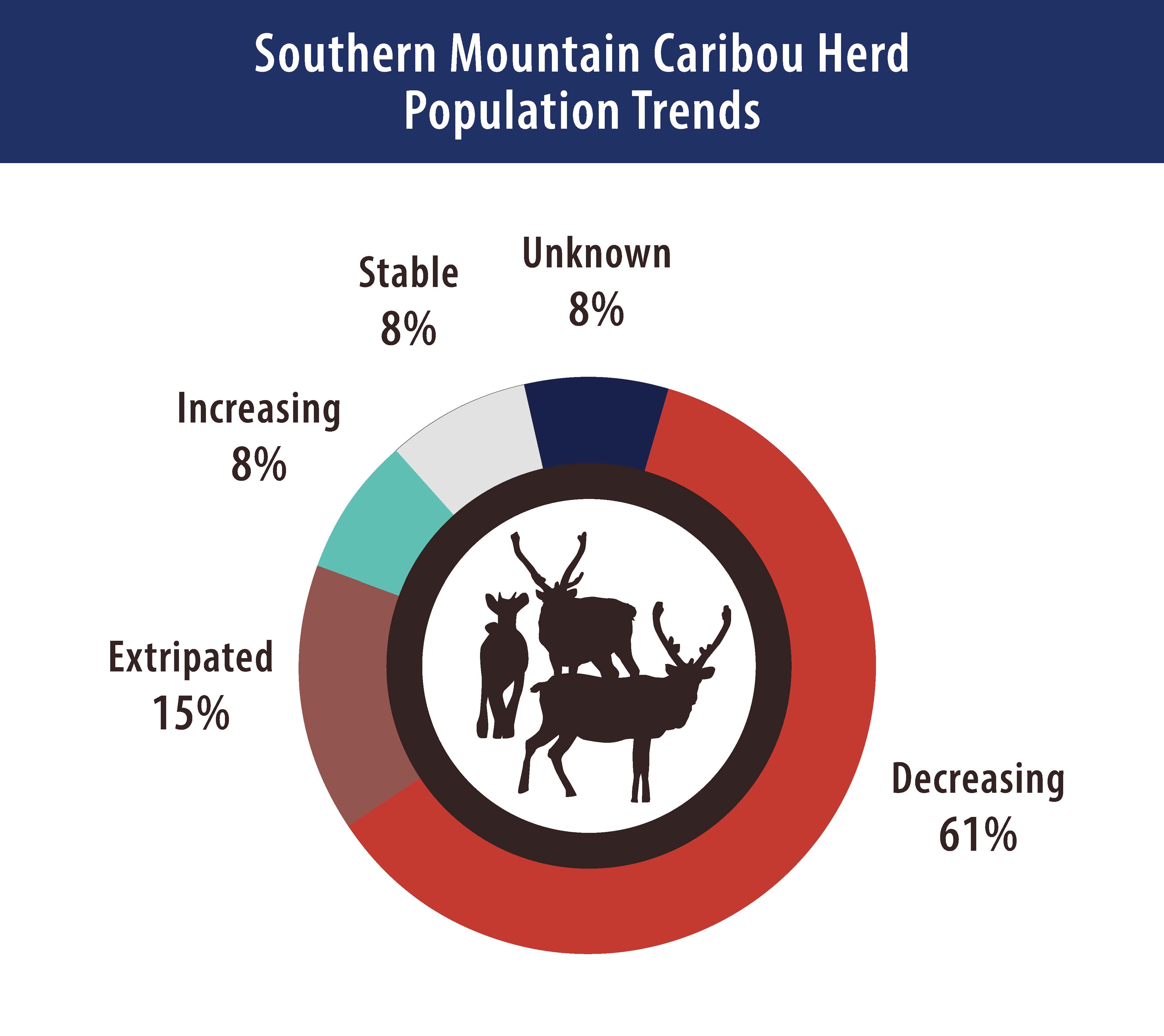
Southern mountain caribou are listed as threatened under the federal Species at Risk Act. Despite this listing, their population continues to decline. The caribou herds most at risk belong to the central and southern groups. For this reason, they’re the focus of many protection efforts.
CARIBOU SURVIVAL: RESTORING SPECIES AND SPIRIT
To the Indigenous peoples whose lands they live on, caribou hold similar importance as salmon and buffalo. First Nations in many regions of B.C. heavily rely on caribou. Caribou hide is used to make clothing like parkas and mittens to withstand freezing and flurries. Hides are also stitched together to make shelters to keep safe from the elements. Caribou are made into diverse foods, from jelly to jerky. Every part of the caribou is used in some way.

First Nations communities have relied on caribou since time immemorial. This relationship was founded on respect and taking no more than what was needed. This interconnection ensured caribou were able to sustain their populations into the future.
It wasn’t until colonization that caribou populations began dwindling. First Nations communities are least responsible for caribou decline, and yet they are the ones fighting the hardest to save them, expending significant and limited resources, time and emotion.
Saving caribou is a restoration of species and spirit. Without caribou, an essential part of many Indigenous cultures and traditions could be lost. It’s time for non-Indigenous governments to get on board and show the same sense of urgency. Caribou need the public to rally behind Indigenous leadership to force the provincial and federal governments to protect caribou.
THE DELIBERATE MISFORTUNE OF CARIBOU
Government officials have described the precarious state of caribou as a misfortune as if caribou simply lack the luck to survive. It’s anything but bad luck — it’s deliberate and obvious resource-first decision-making driving their extinction.
Caribou extinction across Canada is happening at the hands of extractive resource companies. Caribou need old-growth forests to survive, requiring them for food, shelter and safety from predators. The most significant, immediate threat to southern mountain caribou is habitat alteration caused by logging, mining and fossil fuel extraction, which leads to more predators killing caribou.
The real cause of forestry job loss
A main argument against caribou protection from government and industry is that jobs will be lost from habitat protection. How true is this? Turns out, not very.
From 2000-2015 there were 45,000 jobs lost in the forestry sector in BC, and 64 per cent of the jobs lost were due to companies replacing people with technology and automation. Forestry companies push to automate logging to increase profits by reducing labour costs, which is the largest driving force behind job loss.
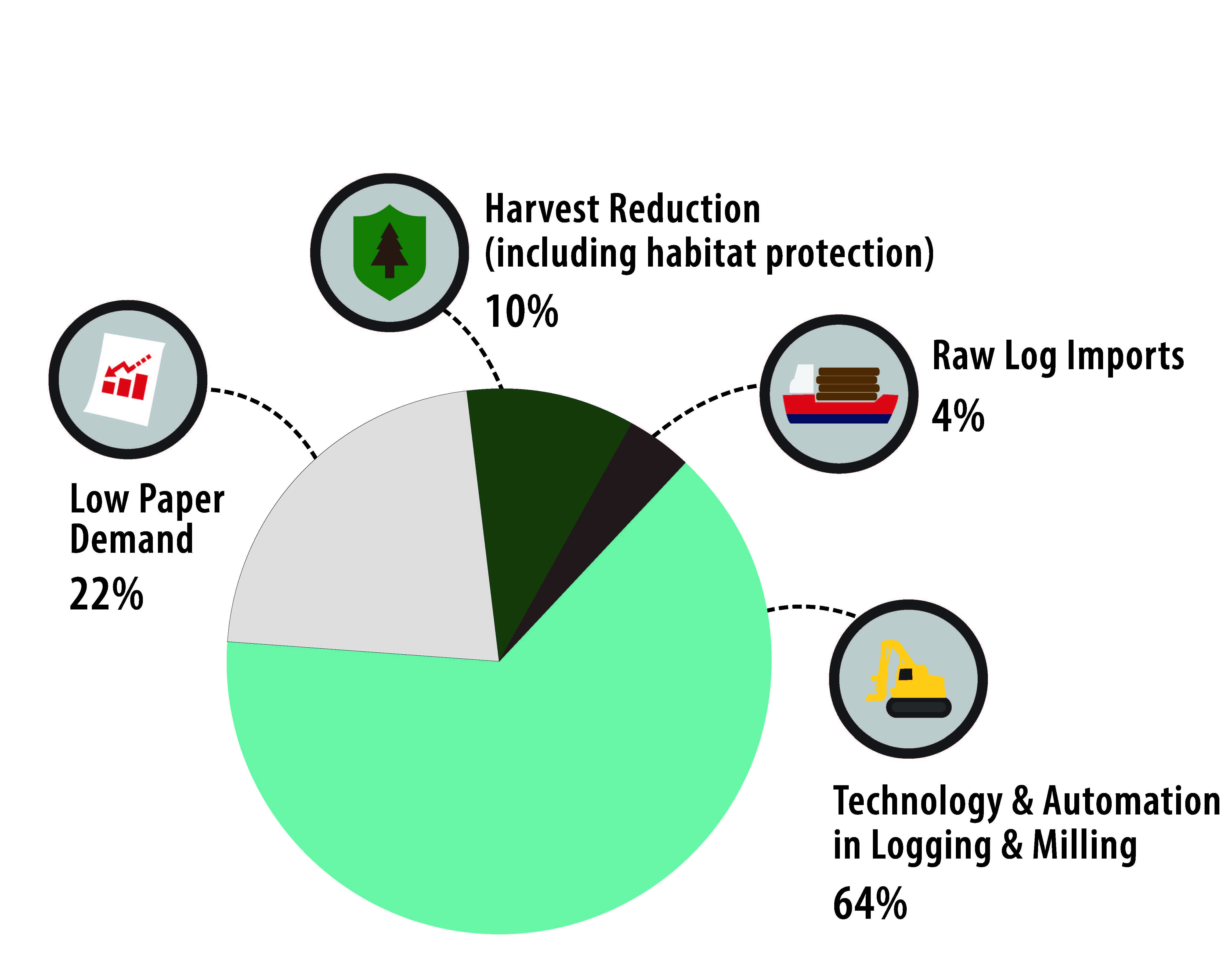
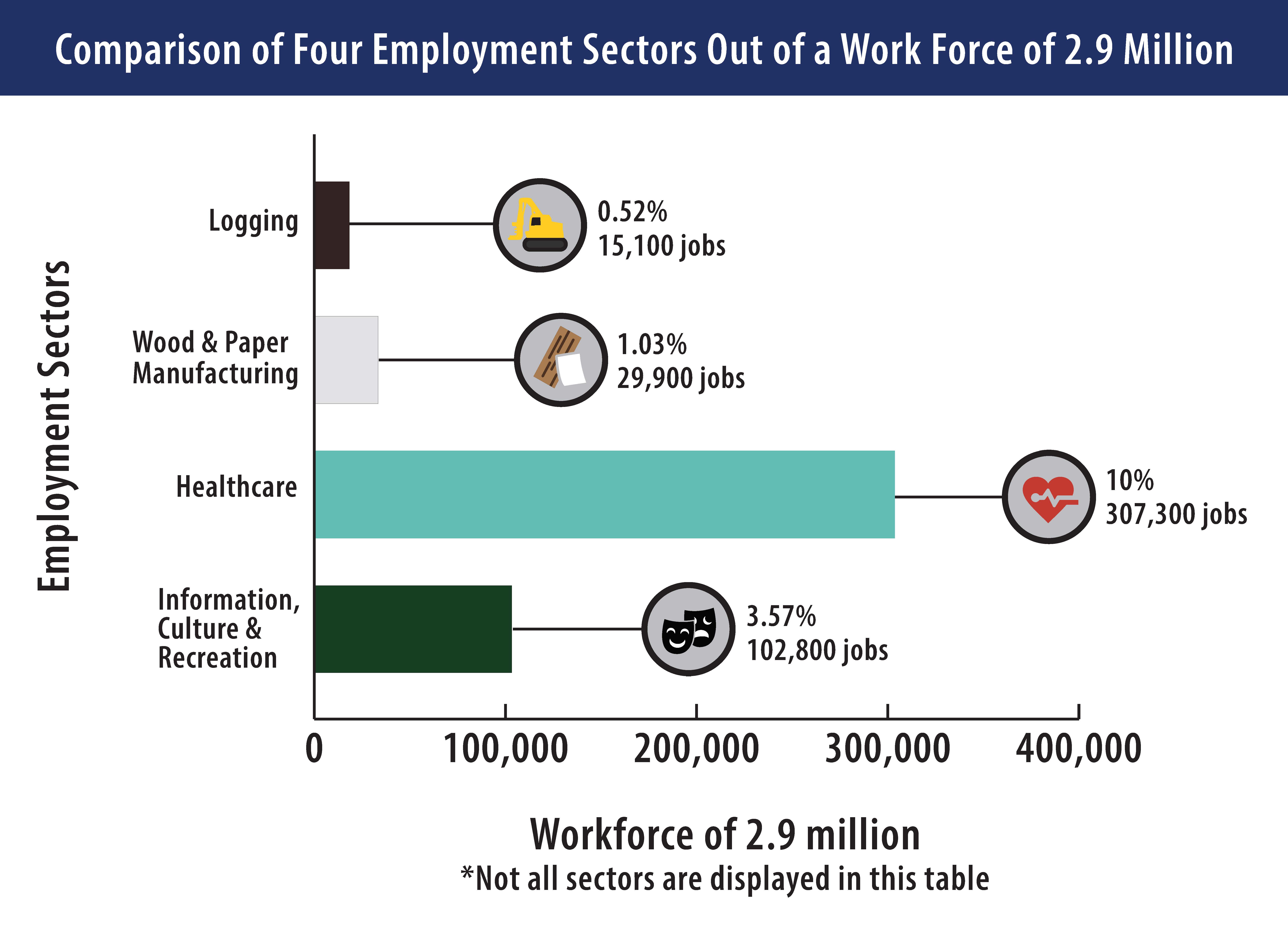
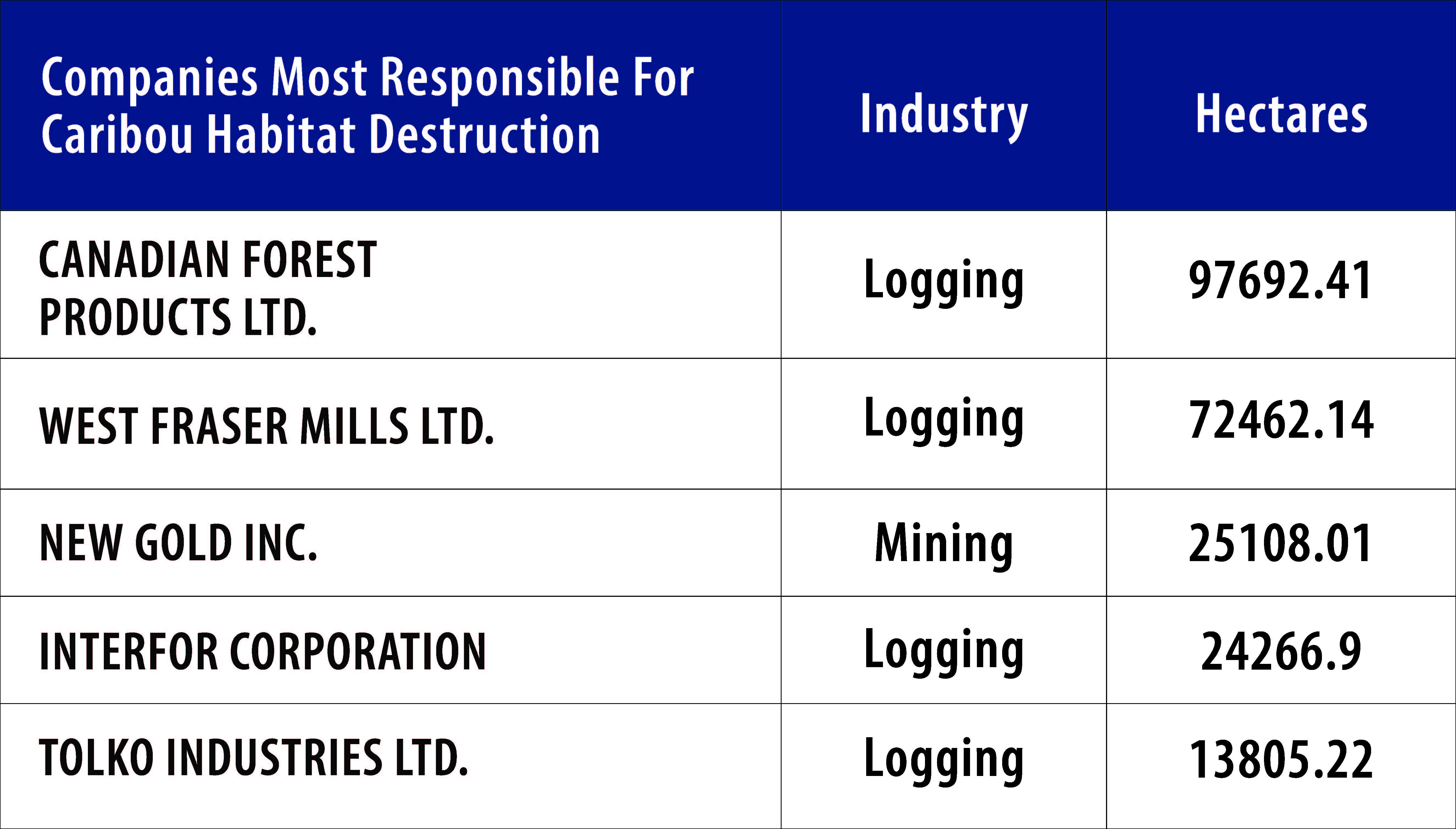
These activities create a forest that accommodates prey species, like moose and deer, making it easier for predators to access caribou habitat. Heavy equipment packs down snow in winter and roads in the summer are like conveyor belts into habitat, except instead of luggage, they bring predators. If we’re going to save caribou, we have to protect more of their habitat by setting it off-limits to industry. But past and present governments try to find a “cheat code,” a way to save caribou while they green light habitat destruction. The travesties corporations get away with seem to worsen every day, as governments spoon-feed corporations power. Under capitalism, the golden ticket to a company’s success is never to do anything that negatively impacts its bottom line.
Corporations hammering caribou habitat declared moral bankruptcy a long time ago, or maybe they never had this, to begin with. It’s a pipedream to think a corporation would voluntarily forgo logging in caribou habitat. We should never, ever assume companies have a moral compass.
From October 2018 to February 2019, the B.C. government approved 314 logging cutblocks in critical habitat for caribou while simultaneously negotiating conservation plans with First Nations to protect them. This is not good-faith negotiating.
A LESSON FROM LICHENS
Lichens are an enchanting symbiosis between fungi and algae or cyanobacteria. Algae bring the ability to harvest light and turn it into energy while the fungi provide structure for the lichen. In stressful conditions algae and fungi come together to form a lichen, able to withstand conditions unimaginable to just the fungi or just the algae. This partnership defies odds, thriving in the most extreme conditions from bare shale to hot dry deserts, to the arctic tundra. Polluted ecosystems are one of the few places lichen are unable to establish, too extreme for even the most tenacious lifeforms.
This partnership brought life to seemingly unlivable places and it also sustains the lives of many others. Ungulates eat lichen, but none rely on them more than caribou. In the forests throughout British Columbia where woodland caribou roam, winter snowpack is so thick that ground-dwelling lichen is off the menu. But lichen, in all its diversity, do not leave caribou hungry in the winter. Tree lichens, belonging to the genus Bryoria, grow off branches from old-growth trees. Caribou stand on top of the snowpack reaching tall to chomp at the lichen dripping down like an outstretched hand offering a life-giving gift.
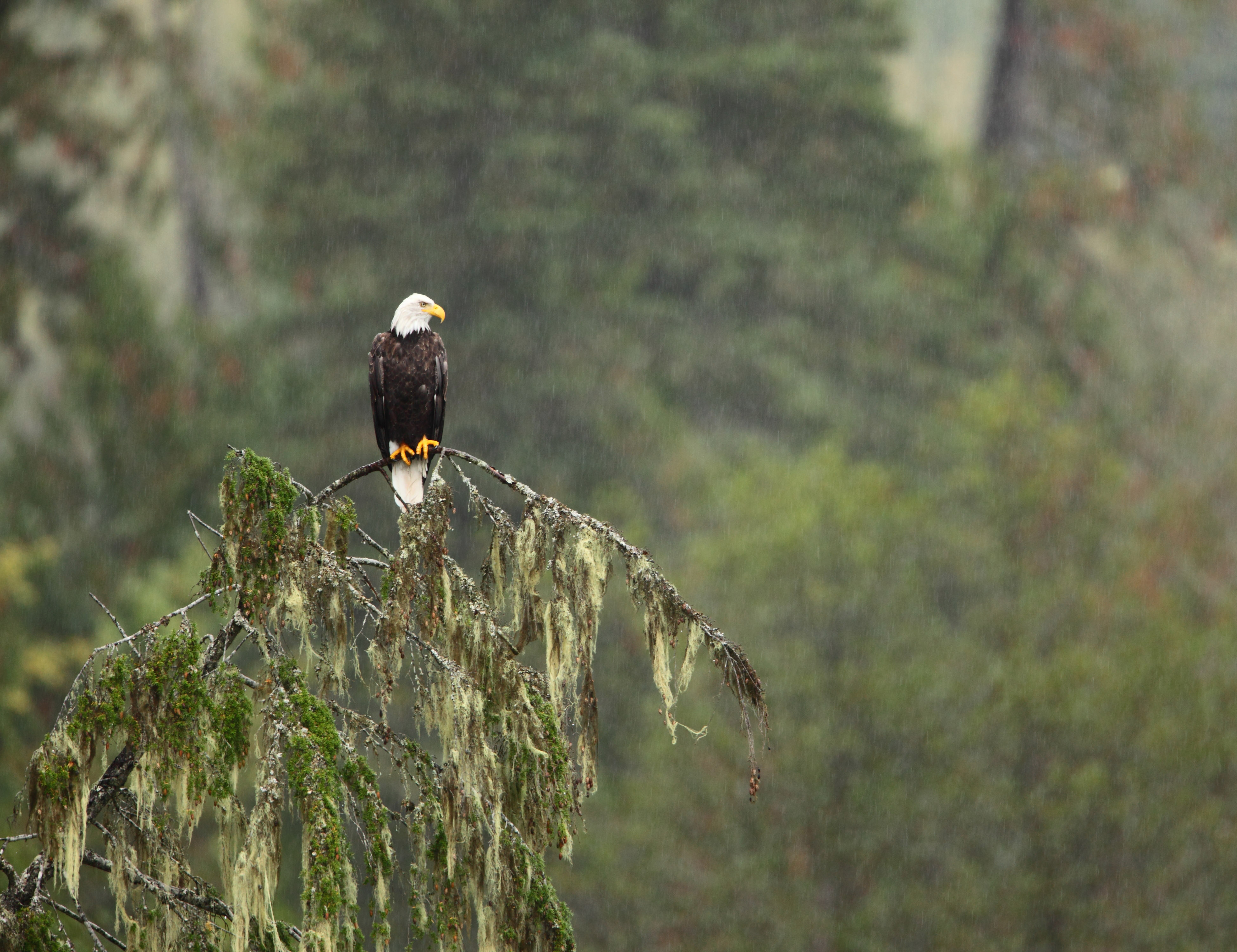
If we’re to save caribou we can take a lesson from lichen, as it knows a thing or two about caribou survival. It may sound cliche but together we can achieve so much more than alone. Guided by Indigenous knowledge of the land, scientists, communities, environmental organizations and governments together can create a framework for saving caribou.
Southern and Central Groups of Southern Mountain Caribou, and their Critical Habitat in BC
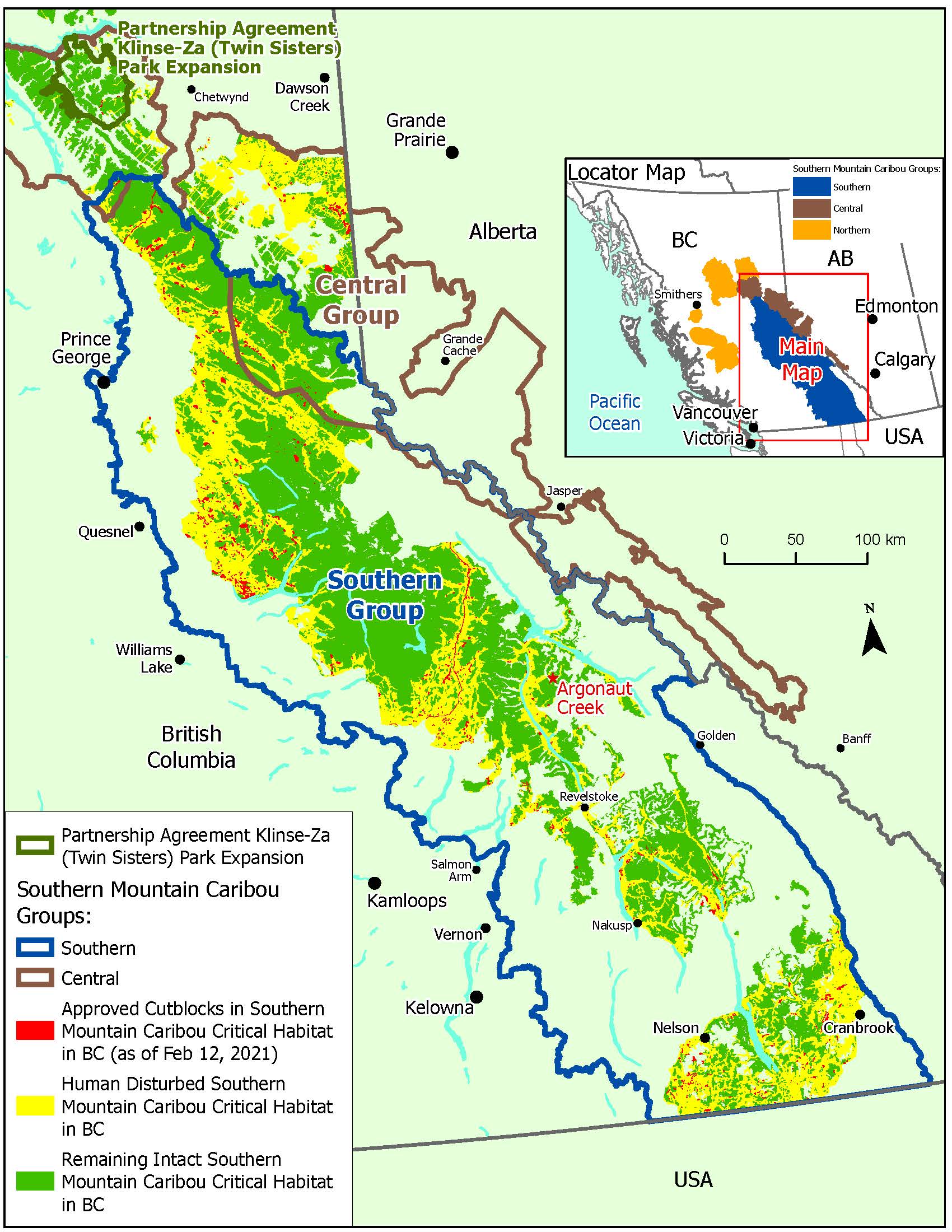
IT TAKES A VILLAGE TO SAVE A CARIBOU
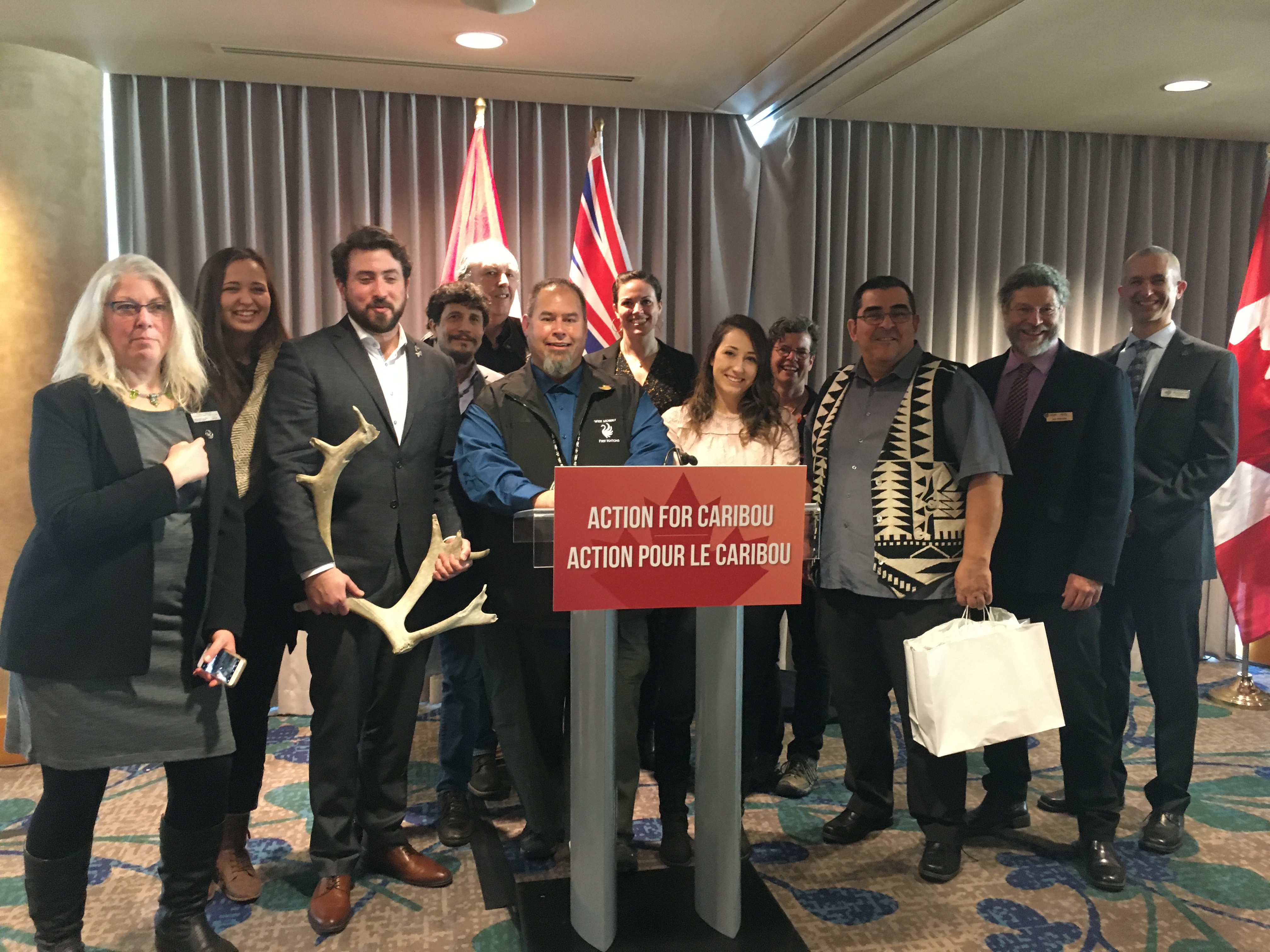
Intergovernmental Caribou Partnership Agreement
In 2020, a partnership agreement was established between West Moberly and Saulteau First Nations, the provincial and federal governments. Located in the Peace Valley in northeast B.C., the territories of these First Nations are an ecological jewel where the boreal forest sweeps through on its northward expansion to Alaska. The plan had broad support from various groups, communities and individuals. Environmental organizations offered help to gain public awareness and thousands of people showed support for the plan.
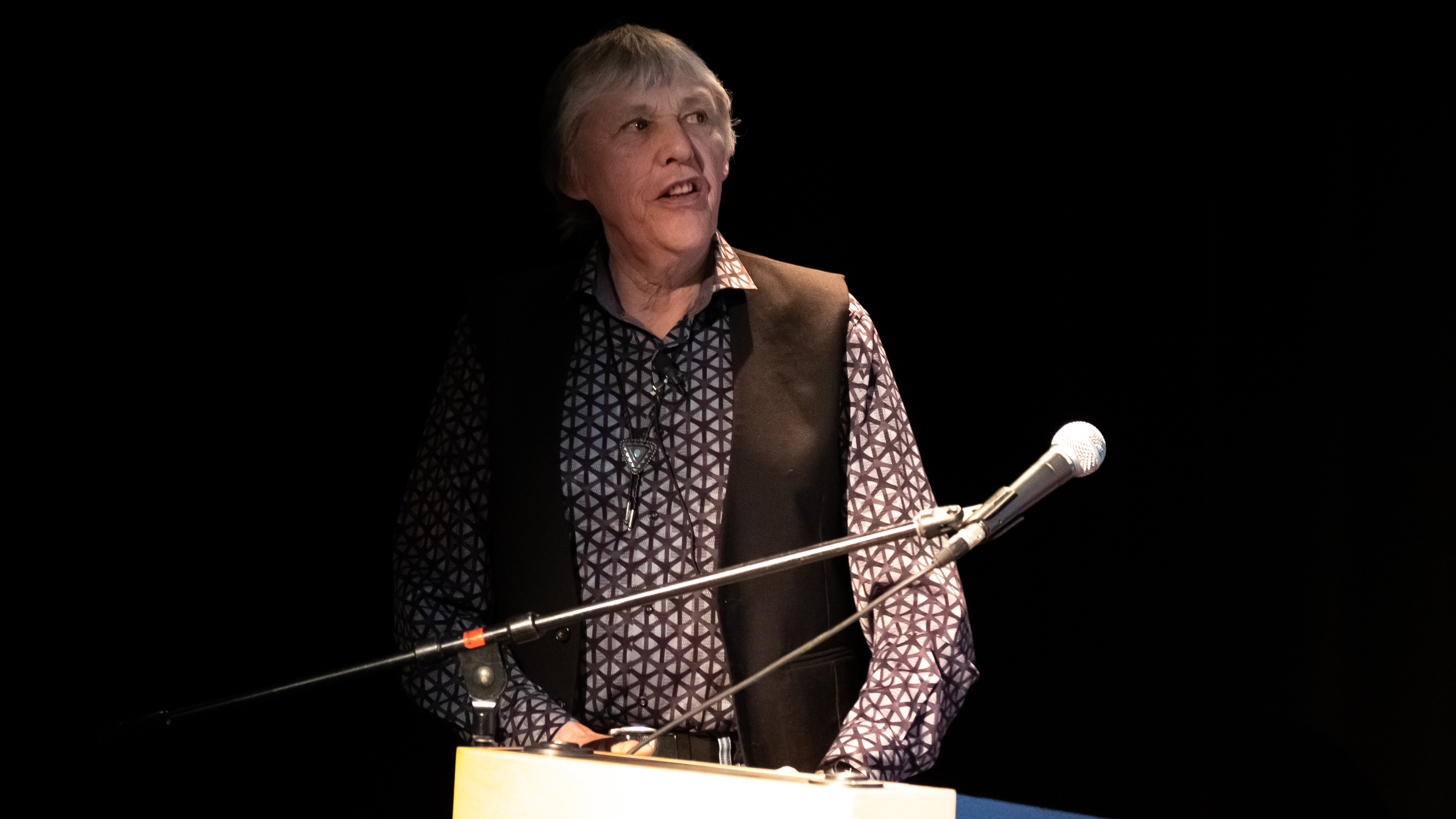
As a child, former-Chief Ken Cameron of Saulteau First Nation witnessed the flooding of the W.A.C. Bennett Dam, which not only flooded habitat but literally drowned caribou. These herds never fully recovered. He’s at the forefront of caribou protection and has been working on a plan for his territory for decades, along with Chief Roland Wilson of West Moberly First Nation. In 2020 they finally won.
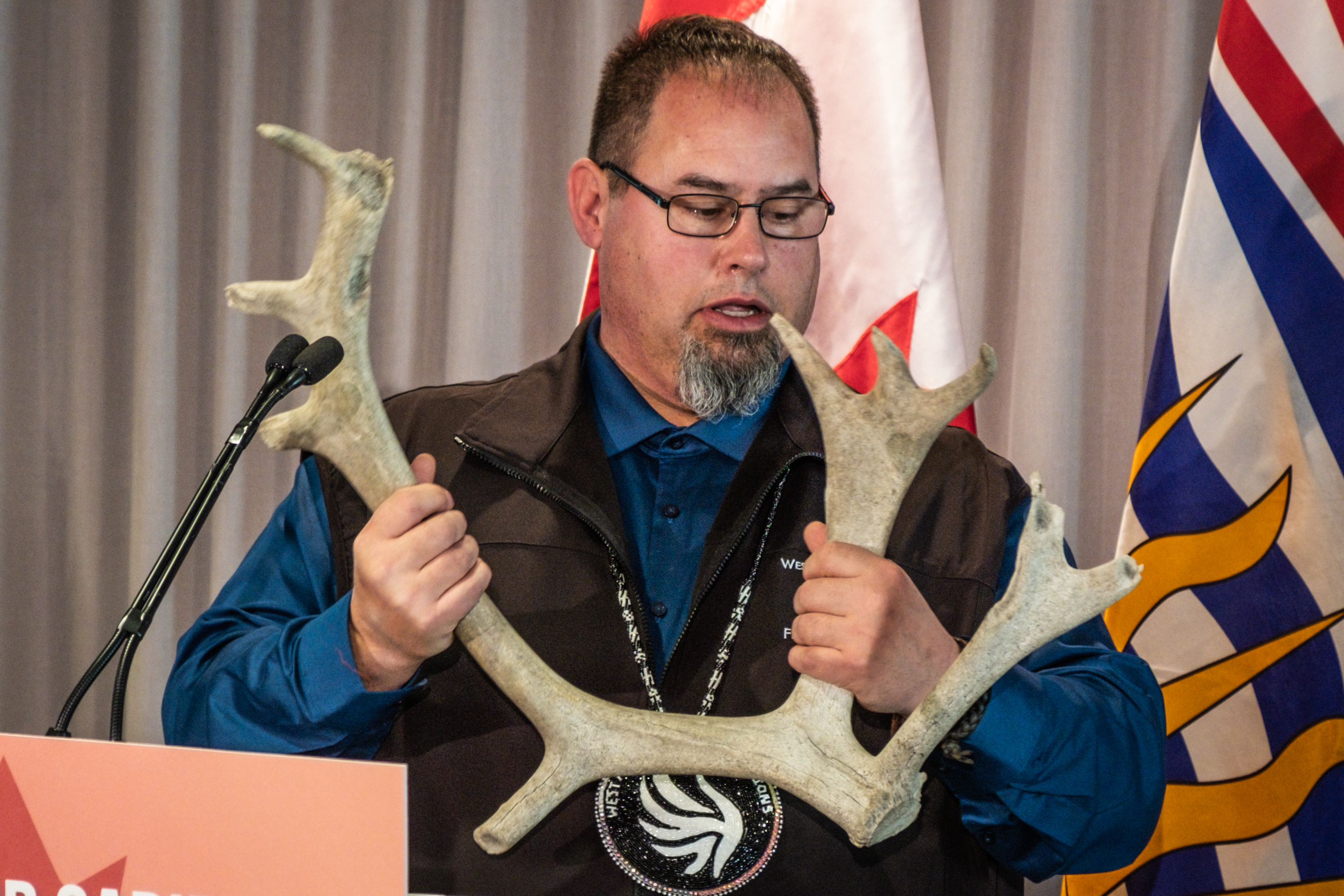
The Caribou Partnership Agreement is the largest conservation project since the Great Bear Rainforest. It goes beyond what any species recovery plan has done before: over 734,300 hectares protected for caribou to roam, support for their maternal pen to keep calves safe, an Indigenous Guardian program and habitat restoration.
Without respectful partnership led by First Nations, it wouldn’t have been possible. Cameron said the agreement sends a message that goes beyond caribou habitat: it shows respectful negotiation and cooperation produces results.
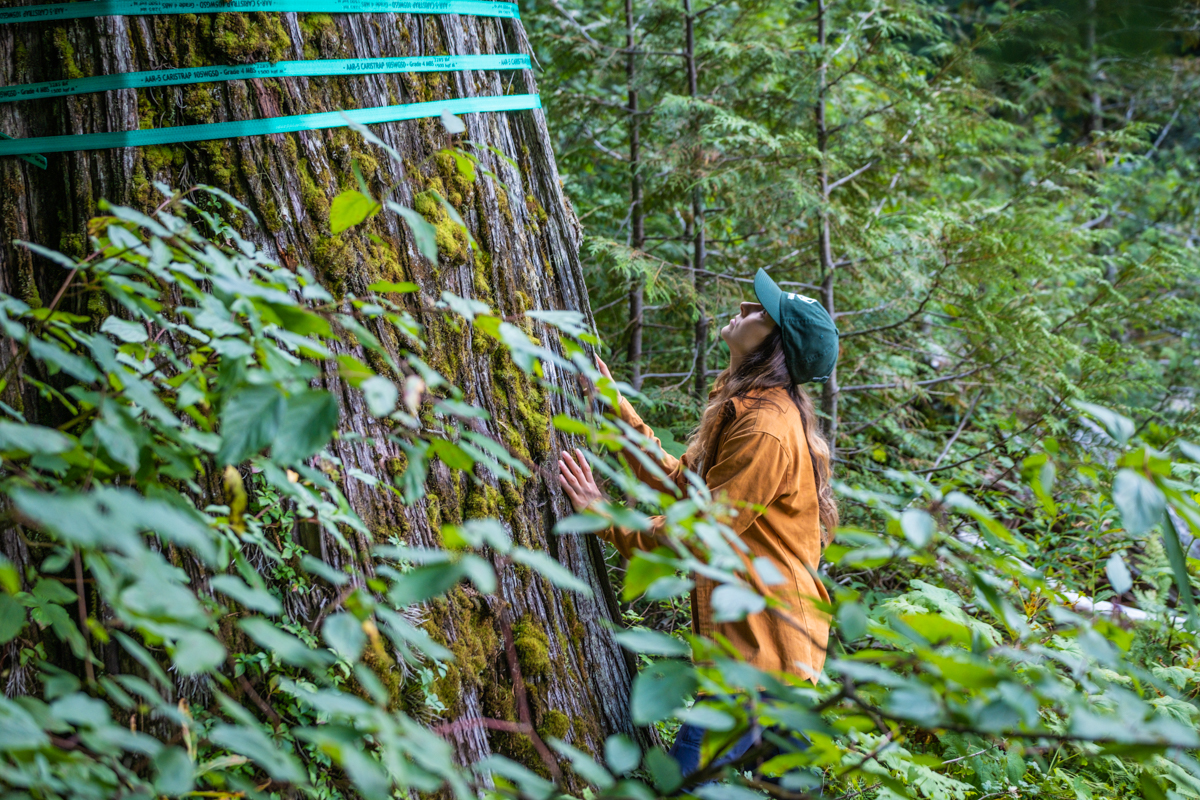
Argonaut Creek: Machines silenced by calls for protection
Argonaut Creek is located at the confluence of the traditional territories of the Ktunaxa, Syilx, Secwépemc and Sinixt. Located north of Revelstoke, it’s home to one of B.C.’s most viable caribou herds, the North Columbia herd — 150 members strong.
(Jacob Dulisse).
In the summer of 2020 Wilderness Committee, Wildsight and Echo Conservation Society discovered the B.C. government’s taxpayer-funded logging agency, BC Timber Sales (BCTS), was planning to log 14 cutblocks totalling 300 hectares of old-growth forest within the herd’s critical habitat. What made this plan even more bizarre was that less than two kilometres away, the government was investing $33,000 to restore habitat for the same herd. The provincial government was spending money to restore habitat on one side of the valley while destroying intact habitat on the other.
After our investigation in Argonaut Creek, we released videos and shared the news of this ill-conceived plan. Opposition from the public and nearby communities came like a tidal wave. In December that year, the B.C. government announced it was halting the auction of 11 of the cutblocks due to public outrage. There are three cutblocks remaining in this valley. The government must cancel these and finish protecting Argonaut Creek. Still, this is another example of the positive change that can happen when people come together for caribou.
CREATING A FUTURE WITH CARIBOU IN IT
Corporations and governments seem to think we can have wild salmon without rivers, spotted owls without nesting homes and caribou without old-growth forests. This is a fantasy and we’re learning it the hard way as salmon are dwindling without healthy rivers, only three spotted owls remain in the wild due to lack of nesting habitat, and caribou decline as old-growth forests are carted away on the backs of trucks.


This delusion that species can survive with business as usual in the forest threatens the caribou’s chance at survival but also risks our future here too. We’re supported by the same healthy soils for food, trees for oxygen, wetlands for carbon sequestration and rivers for water. All are at risk because of the endless hunger for corporate profits. Governments must find their backbone and stand up to industry by changing the framework they’re allowed to operate within. No more approving projects destined to doom wildlife. The B.C. government must fulfill its broken promise and create a stand-alone law for species at risk in B.C. This would finally allow species to recover before it’s too late and before it becomes extremely expensive and difficult to save them.
The federal government must follow their Species at Risk Act and force non-compliant provinces to protect habitat needed for species survival. It’s not far-fetched to imagine a system where industries that have reaped billions exploiting resources are held responsible for the damage they’ve caused. The current system of relentless wilderness destruction for the benefit of a handful of companies isn’t sustainable for ecosystems, wildlife or healthy communities — this is obvious.
Corporations cut, drill and drain B.C. for profit. They never stay in one place forever, they dry out resources and move on, abandoning communities in their wake — that’s inevitable. But our desire and fight to protect what remains are so much stronger than their inevitably doomed business model.
Communities must rise and get louder so governments have no choice but to listen. Our demands are clear — value wilderness and wildlife over corporate greed. What remains are big questions that will mould the future: In the end, will there be big trees or big stumps, mountains intact or dismantled, old-growth forests with caribou or tree plantations without?
GET LOUD FOR CARIBOU
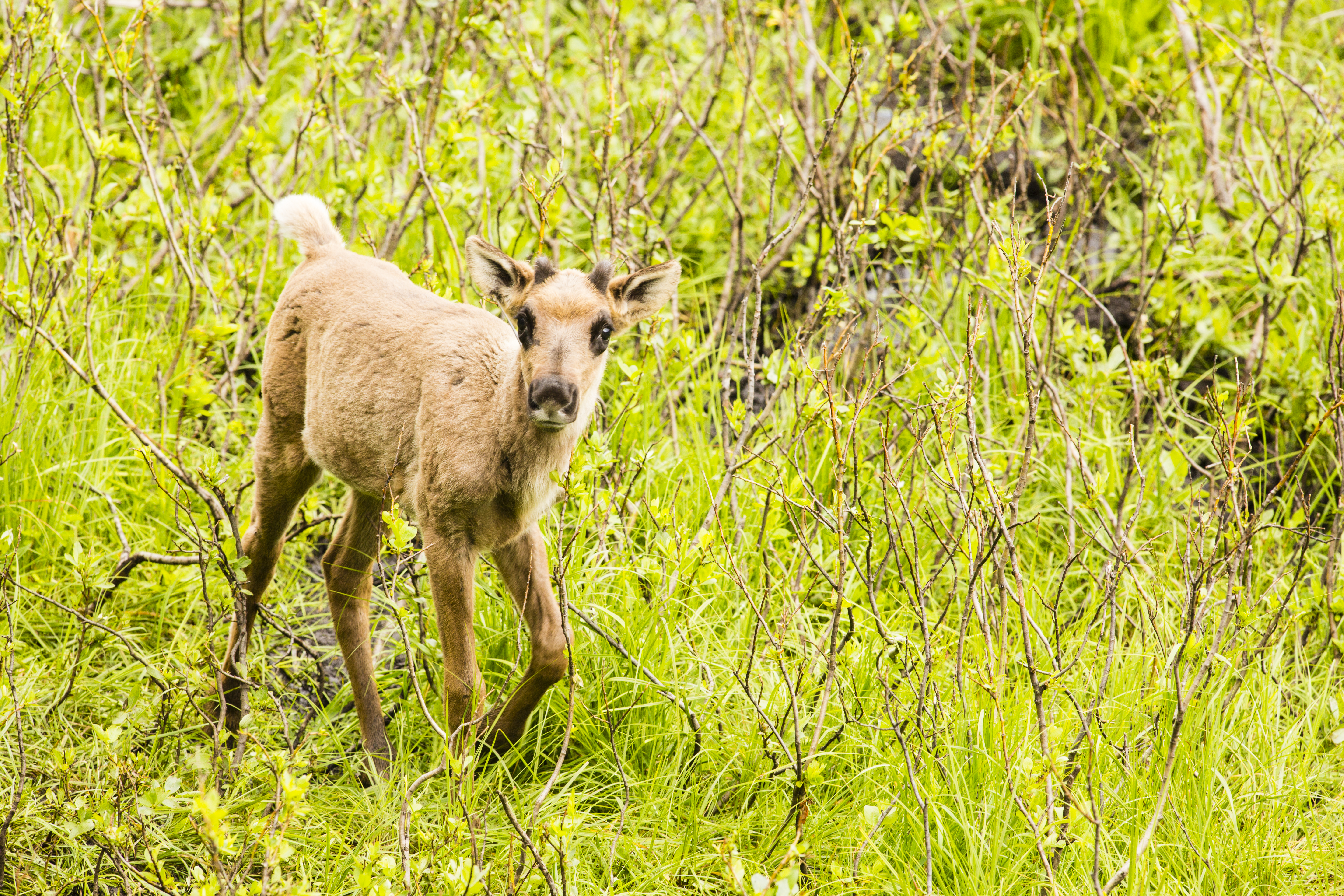
DONATE
It is impossible to imagine a "Super Natural British Columbia" without southern mountain caribou. At the brink of extinction and without legal protection, their habitats are threatened by industry.
HERE’S MY GIFT FOR CARIBOU PROTECTION!
Your gift today will support on-the-ground documentation and partnership with local communities and First Nations to protect southern mountain caribou habitat, as well as ongoing work to make species protection a top priority for legislators.